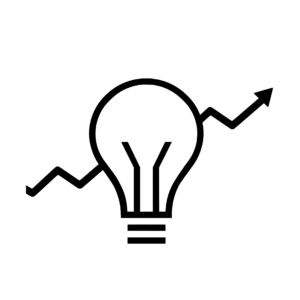The Art & Science of Forecasting
Trend forecasting, whether it is in categories such as the supply chain, retail, consumer or other industry segments, helps businesses plan accordingly when it comes to manufacturing, inventory, distribution and other needs. But can trend and demand forecasting be accurate all the time? Certainly, it may be an inexact science, but it’s an important function for forward-looking organizations that need foresight for their operations.
As BCI Global notes in its article, “5 Myths About Forecast Accuracy,” “misconceptions about what forecast accuracy truly means and how it impacts business performance often lead to misaligned strategies and unrealistic expectations.” A data-driven approach may work best. BCI breaks down some of the common myths when it comes to demand and trend forecasting:
- Myth #1: Higher Forecast Accuracy Always Leads to Better Business Performance. Reality: Forecast accuracy alone does not guarantee better supply chain performance. Agility and responsiveness are equally, if not more, important.
- Myth #2: More Data Automatically Improves Forecast Accuracy. Reality: More data does not necessarily lead to better forecasts; data quality, relevance, and the right analytical models matter more.
- Myth #3: A Single Forecasting Model is Enough for All Situations. Reality: Different products, markets, and supply chain conditions require different forecasting approaches.
- Myth #4: Forecast Accuracy is Only About Reducing Errors. Reality: The objective is not just to minimize forecast errors but to optimize decision-making under uncertainty.
- Myth #5: Technology Alone Can Solve Forecasting Challenges. Reality: Advanced AI and forecasting tools enhance accuracy, but human expertise and business judgment remain critical.
Myth-Conceptions About Trends
During TMRE 2025, Matt Klein, Webby-Winning Writer and Insights 250’s Top Voices in Market Research, Digital Anthropologist, Author of ZINE, Head of Global Foresight at Reddit, will hold a presentation, “Keynote: Debunking the Myths of Trends.”
Trends are trending, but do they actually represent the zeitgeist and reveal what’s most important to consumers? The solution to trend-mania is “Foresight as Activism.” Instead of corralling people to a brand’s priority, we can support communities’ existing goals and build preferred futures.
Takeaways include that the trend industry is producing unhelpful insights; the problem with market research is that it’s backwards looking; winning brands are adopting a “build with, not for” approach to cultural strategy.
Identifying Evolving Trends
In All Things Insights’ blog, “Evolving Trends into Insights Strategies,” we took a look at how trends can help leverage and support insights strategies. While some companies chase trends and focus on what is new and emerging, others can leverage these trends to create organizational strategies that are avenues of stable growth. Just how can one recognize and identify a trend and pivot to a successful strategy? All Things Insights had the opportunity to chat with Kristen Griffith, Insights Director, Dynamic Deployment & Consumer Learning Center at The Clorox Company, who spoke on this topic at TMRE 2024 during her session, “Trends: How Drivers of Change Can Be Sources of Stability.”
Driving Insights to Respond to Trends
Foresight strategies and trend forecasting are a significant part of the insights arsenal and can help manage business and supply chain operations. But misconceptions can lead to ineffective strategies. In terms of ways to enhance responsiveness and resilience, BCI recommends:
- Focus on agility and execution, not just accuracy percentages.
- Prioritize relevant, high-quality data over sheer data volume.
- Use multiple forecasting models tailored to different scenarios.
- Evaluate forecast effectiveness based on business impact, not just error rates.
- Integrate AI with expert-driven decision-making for the best results.
WGSN, in its “Trend Q&A: Debunking forecasting misconceptions,” discusses what it takes to be a trend forecaster, common misconceptions, and how to manage contradicting trends. A disciplined approach using data and insights may be the key to an effective use of trend forecasting.
Maria Pascua, Client Services, WGSN, notes, “The biggest misconception about the trend forecasting industry is that we just take a peek into our magic crystal ball to see what the future holds and translate it into reports, trends and even products. But at WGSN, we have a thorough investigation process that focuses on consumers. Our STEPIC methodology analyzes and tracks changes throughout society, technology, environment, politics, industry and creativity, using proprietary data and research to give us insight into consumers’ needs and drivers.”
Video courtesy of WGSN
Contributor
-

Matthew Kramer is the Digital Editor for All Things Insights & All Things Innovation. He has over 20 years of experience working in publishing and media companies, on a variety of business-to-business publications, websites and trade shows.
View all posts






























































































